Soft and pillow-y potato gnocchi combine with a veggie-laden tomato sauce in this Ñoquis con Tuco, an Argentine take on an Italian favorite recipe. It’s no surprise that Argentine wine is the perfect pairing for this dish!
 Italian Food In Argentina
Italian Food In Argentina
When you think of the cuisine of Argentina, Italian food might not be the first thing that comes to mind, but it shouldn’t be too far behind grilled meats, matambre, and chimichurri sauce.
Argentina saw an influx of Italian immigrants starting in the mid 1850s. With them, they brought their traditional favorites like pizza, pasta, and potato gnocchi.
Argentinian Ñoquis Day – Dia de Ñoquis
In fact, on the 29th of every month, it is traditional for Argentinians to eat ñoquis for good luck.
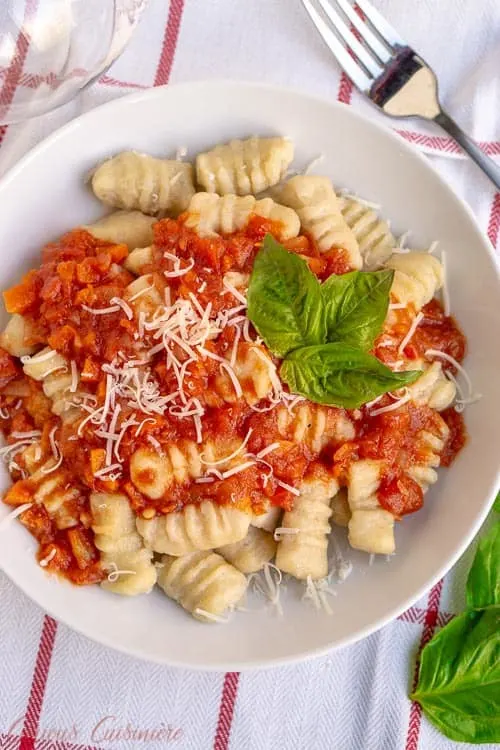
This tradition comes from those Italian immigrants. They would receive their paychecks on the first of each month. So, by the end of each month, there was not much money left to feed the family.
It became common to eat ñoquis on the day before they received their next month’s paycheck because the meal was inexpensive and also quite filling.
The 29th is also a day that Italians traditionally celebrate Saint Pantaleon. A simple meal of gnocchi was the traditional way to remember the miracles he performed as he traveled around Italy.
The tradition has continued, and now it is common to put money under your plate while eating ñoquis on the 29th. This money and eating the ñoquis is supposed to bring you good luck for the month ahead.
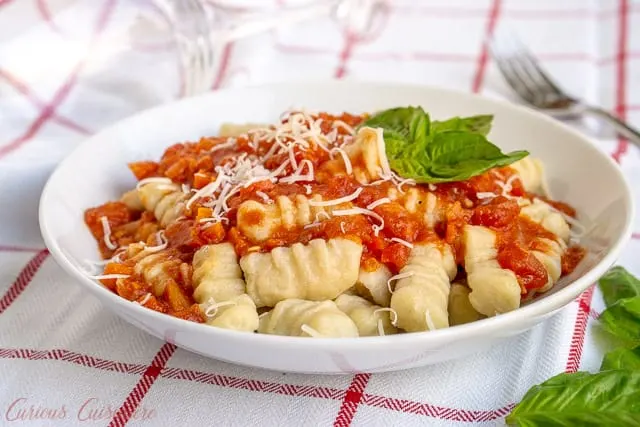
How To Make Ñoquis (Gnocchi)
Making ñoquis is quite straightforward, but it does take a bit of time.
First, you need to cook your potatoes to very soft. This can be done by boiling or baking.
For this recipe we’re baking them, because it doesn’t add extra liquid to the potatoes, allowing us to add in some ricotta and an extra egg for richness in our ñoquis.
Once your potatoes are cooked, you need to mash them into the smoothest mashed potatoes you’ve ever made. We find that mixing and pressing your mashed potatoes with a spatula is a great way to ensure that they are very smooth.
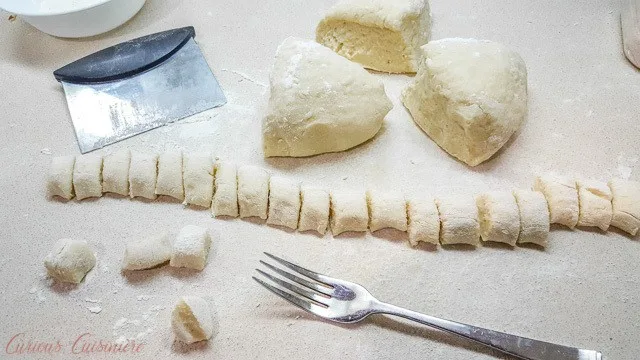
Any firm bits of potato will show up in your dough and impact the texture of your ñoquis, so you want to smooth it out all you can in this step to set your dough up for success.
How To Roll Ñoquis
After you mix the dough, you need to roll it into ropes, cut it, and then roll the gnocchi to create ridges that are nice pockets for the sauce.
Now, for the longest time, we thought that rolling ñoquis (gnocchi) was all about giving each piece those little ridges on the outside.
But, while those do their share at holding the sauce, the real reason for the rolling is what you don’t see from the top of your ñoquis.
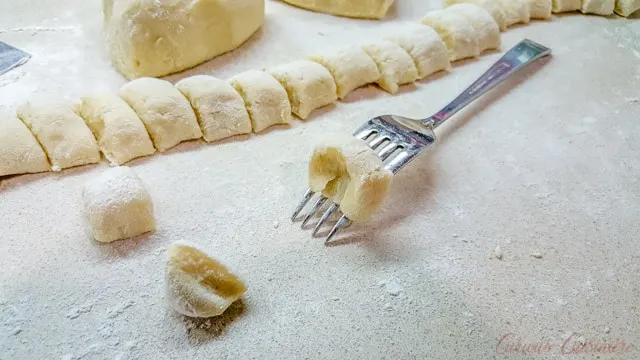
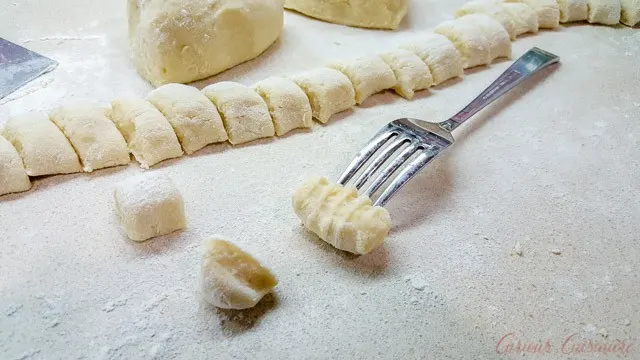
As you roll each ñoqui against your fork (or gnocchi board), you create another, deeper indentation in the back side of the ñoqui.
This indentation holds even more sauce but also helps the ñoquis to cook evenly and quickly.
Ñoquis con Tuco – Gnocchi with Tomato Sauce
While Argentine ñoqui is very similar to Italian gnocchi, what makes the Argentine version really special is the sauces they are served with.
You will find an array of sauces from simple tomato, tomato, and meat (chicken is common), or even stew-like.
The sauce we chose today is a simple tomato sauce in the Argentine fashion, which means it includes carrots and red peppers. For seasoning, we’re using some paprika, cumin, and oregano.
It’s definitely not your classic Italian tomato sauce. But, we do love the Argentine spin!
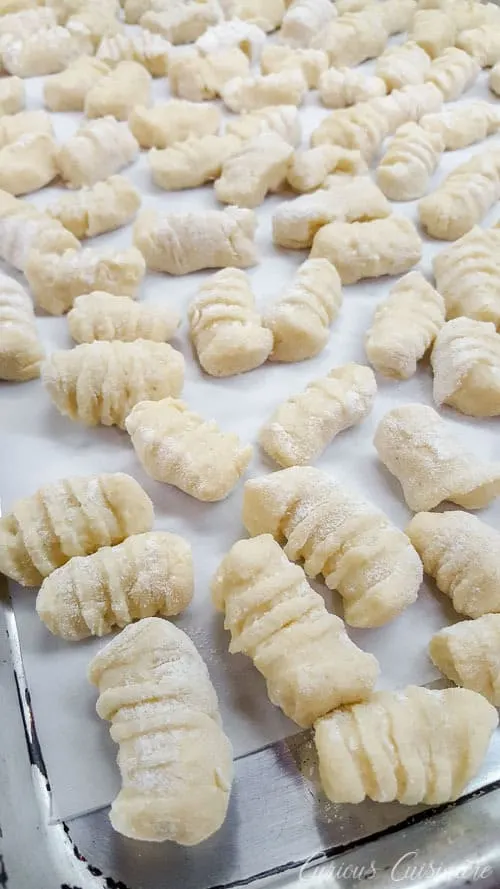
Wine Making In Argentina
DISCLOSURE: We received samples of the wine mentioned below. As always, all opinions are our own.
When you think of Argentine wine, you probably think of Malbec, but Argentina has been emerging recently on the wine scene, (they’re actually the 5th largest wine-producing country in the world), and it’s more than just Malbec that they’re producing.
Mendoza (about smack dab in the middle of the eastern side of the country) is the largest wine region in Argentina. Its location near the Andes provides irrigation and shelter from harsh temperatures, as well as high altitudes, giving the grapes a cooler climate to grow in.
The most common grape varietals in Mendoza are Malbec and Cabernet Sauvignon. But you will also find Tempranillo, Chardonnay, and many others.
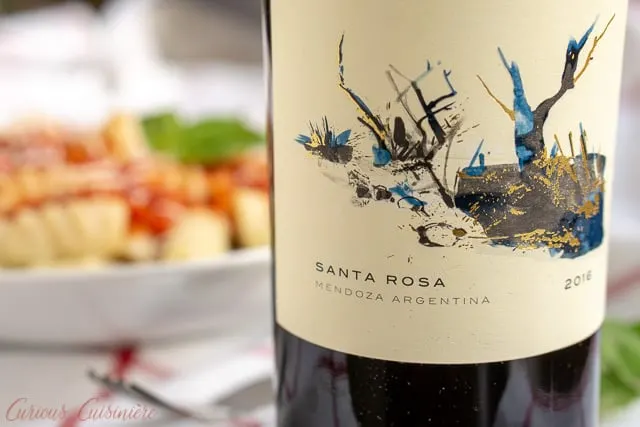
We received samples of Argentine wine from Winesellers, Ltd, a family-owned importer based in the US. They import wines from all around the world made by family-owned wineries. (You may remember them from our German wine pairing article a few months ago.)
We were sent wine from Zuccardi Family Wines, a family-owned company that started in 1963 and is now in its third generation of family ownership. Their vineyards are in the Uco Valley, in the Mendoza wine region, at the foot of the Andes mountains. It is an oasis that provides a range of climates, altitudes, and soil types for their vines.
It is notable that 35% of Zuccardi Family wines’ vineyards are organic and those that are not are still very committed to sustainable production systems. The Zuccardi Family is considered a pioneer in wine production in Argentina, often experimenting with varietals that are not typical of the region.
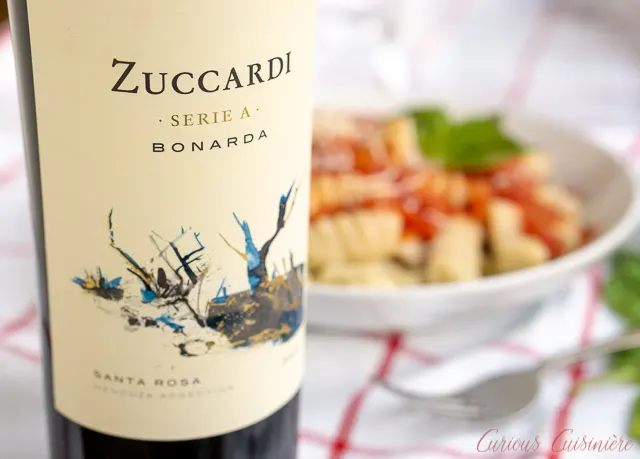
Our Argentine Wine Pairing With Ñoquis
Wine-making started in Argentina much earlier than the Italian immigrants, with the Spanish colonizers it the 15oos, but the Italian immigrants did bring their touch to the wine industry in Argentina, so it’s no surprise that we find grape varietals in Argentina that are traditionally Italian, like Bonarda.
We found the Zuccardi Bonarda to be very fruit-forward on the nose with notes of blackberry and plum. The fruit carried through to the palate with a full-bodied, juicy acidity and a smooth finish.
This wine was a nice pairing with our ñoquis. The oil in the sauce and the Parmesan cheese we used to top our bowls smoothed the acidity of the wine and brought out more of the fruit flavors.
We also served this wine the following day with a beef roast and found that it did really shine with the extra fat and depth of the beef.
Either way, we quite enjoyed the wine and are excited to dive deeper into wines from Argentina!
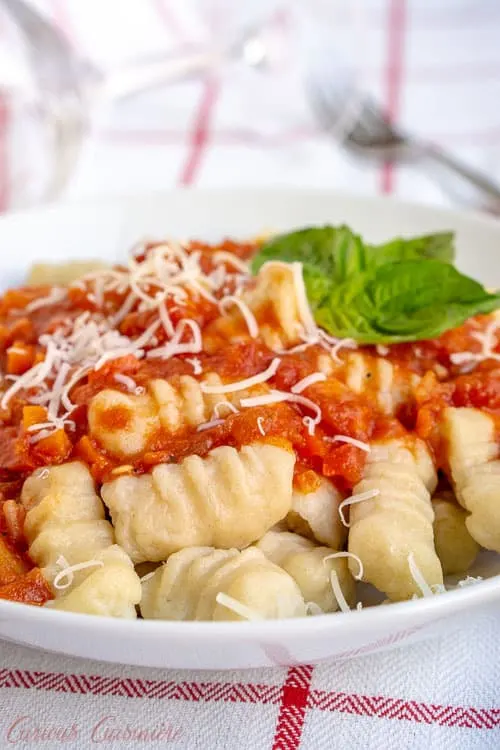
Ñoqui con Tuco (Potato Gnocchi with Tomato Sauce)
Ingredients
For The Ñoquis
- 2 lbs russet potatoes
- 2 eggs
- ½ c whole milk ricotta cheese
- ½ tsp salt
- Pinch nutmeg
- 2 ½ c unbleached all-purpose flour
- Parmesan cheese, to top (optional)
For The Sauce
- 3 Tbsp olive oil
- 1 large onion, diced
- 1 large carrot, diced
- 2 cloves garlic, minced
- ½ large red pepper, diced
- 2 (14.5 oz) cans diced tomatoes
- 2 c water or unsalted vegetable stock
- 2 bay leaves
- 1 ½ tsp paprika
- 1 tsp cumin
- 1 tsp oregano
- ½ tsp salt
- ¼ tsp ground black pepper
Instructions
- Preheat your oven to 400F.
- Wash the potatoes and bake for 1 – 1.5 hours, until very soft.
- Remove the potatoes from the oven and let cool to the touch.
- While the potatoes are baking, make the sauce. Heat the olive oil in a large saucepan over medium high heat. Add the onion, carrots, garlic, and red pepper. Sauté until softened, 5-10 minutes.
- Add the tomatoes, water (or stock), and seasonings. Simmer for 10-15 minutes.
- Remove the sauce from the heat and blend slightly with an immersion blender, just until slightly chunky. (Alternately, transfer the sauce to a stand blender and pulse carefully until the desired consistency is reached.)
- Set the sauce aside until ready to serve. (This sauce can be made ahead of time and reheated before serving.)
For The Ñoquis
- After your potatoes are baked and cooled to the touch, slice them in half and scoop the soft insides into a bowl. Mash the potatoes until smooth. (We find that finishing our mashing by pressing and stirring with a rubber spatula helps to press out any last potato lumps.)
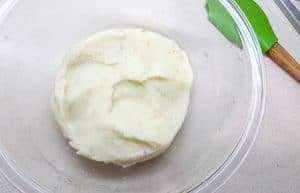
- Add the eggs, ricotta, salt, and nutmeg to the mashed potatoes. Mix well.
- Mix in the flour ¼ - ½ cup at a time, until a soft, but not too sticky, dough comes together. As you near the end of the flour, turn the dough out onto your counter and knead it with your hands to incorporate the last of the flour. (The amount of flour needed will vary depending on the moisture content of your potatoes. Your dough should be soft, but not sticky. It should be easy to work with and shape.)
- Divide your dough into 4 sections. Working with one section at a time, roll it into a rope roughly 1 inch in diameter. Cut the rope into ¾ - 1 inch pieces for your ñoquis.
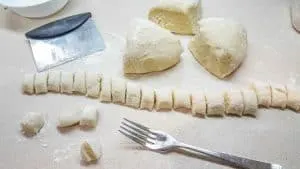
- Take each ñoqui and roll it on the back of a fork (or a gnocchi board), pressing with your thumb to create an indentation in the back of the ñoqui, then wrapping the side with the ridges imprinted from the fork around the indentation.
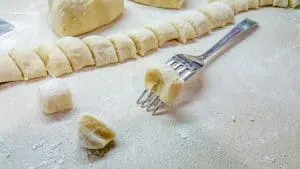
- Place the shaped ñoqui on a parchment-lined baking sheet. Continue with the remaining dough.
- Once all your ñoquis have been shaped, you can boil them immediately or freeze them for later use*.
- To boil the ñoquis, bring a large pot of water to a boil. Add about ¼ of your ñoquis to the pot, stirring the water as you add to keep them from sticking to the bottom. Simmer the ñoquis for 3-4 minutes, until they float to the top of the water.
- Transfer the cooked ñoquis to a serving bowl using a slotted spoon to drain out any excess water.
- Top the ñoquis with your sauce and serve with Parmesan cheese, if desired.
Notes
If you’re as excited as we are to learn more about wines from Argentina, check out these other pairings from other Wine Pairing Weekend (#WinePW) members.
- Deanna from Asian Test Kitchen presents”Easy Thai Basil Chicken + Torrontes”
- Wendy from A Day in the Life on the Farm shares “A Taste of Argentina”
- Jill from L’Occasion presents “All The Range: Not Just Malbec From Argentina“
- Camilla from Culinary Adventures with Camilla shares “Carbonada Criolla + Zuccardi Q 2013 Tempranillo”
- David at Cooking Chat presents “Roasted Chimichurri Steak and Wines from Argentina”
- Cindy at Grape Experiences shares “Wine and Dine with Bodega Trivento Winemaker German di Cesare”
- Sarah at Curious Cuisiniere presents “Ñoqui con Tuco (Potato Gnocchi with Tomato Sauce) paired with Argentinian Wine”
- Michelle at Rockin Red Blog shares “Exploring Argentinian Wine with the Zuccardi Family”
- Jane at Always Ravenous presents “How to Pair Vegetarian Food with Argentine Wines”
- Jennifer at Vino Travels shares “Argentina Wines with Familia Zuccardi”
- Kat at Bacchus Travel and Tours presents “Exploring Argentina: Warm Wines for Cold Nights”
- Nicole at Somms Table shares “Catena Lunlunta Malbec and Steak with Chimichurri for Two“
- Nancy at Pull That Cork presents “Domaine Bousquet Reserve Wines & Savory Tray Bake“
- Martin at Enofylz Wine Blog shares “A Cross Cultural Food And Wine Pairing with Amado Sur”
- Rupal at Syrah Queen presents “Wines of Zuccardi – Malbec and Beyond”
- Steve at Steven’s Wine and Food Blog shares “Argentine Torrontes and Romesco Sauce”
- Gwen at Wine Predator shares “Go Organic in 2019 With Argentina’s Domaine Bousquet and Santa Julia“
- Jeff at Food Wine Click! presents “Party Guaranteed: Pulled Pork and Argentine Wine”
If you liked this recipe, here are some similar dishes you may enjoy!

Sarah founded Curious in 2010 as a way to save her recipe creations and share culinary experiences. Her love for cultural cuisines was instilled early by her French Canadian Grandmother. Her experience in the kitchen and in recipe development comes from over 10 years working in professional kitchens. She has traveled extensively and enjoys bringing the flavors of her travels back to create easy-to-make recipes.
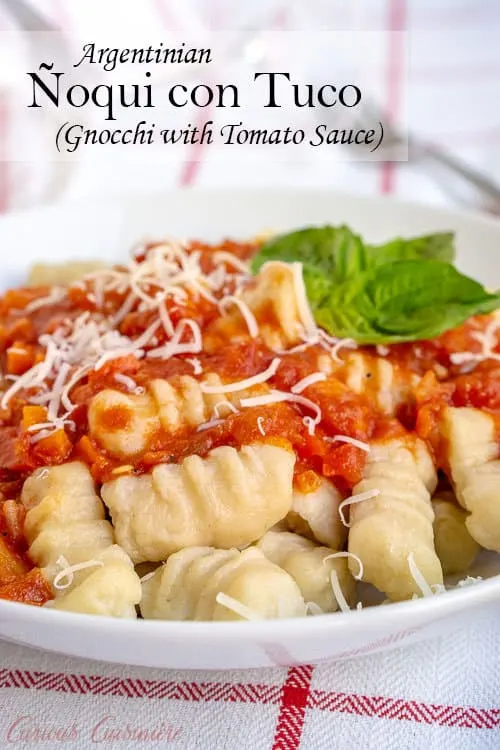 Italian Food In Argentina
Italian Food In Argentina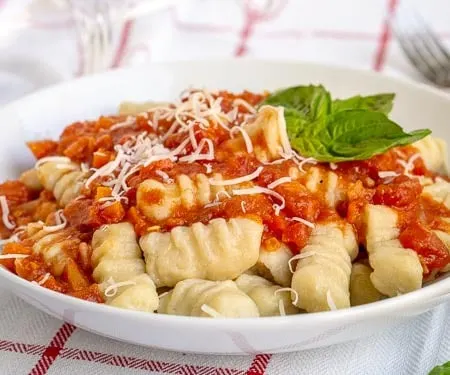
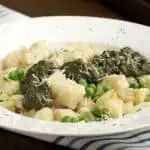
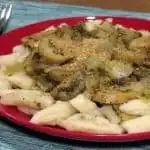
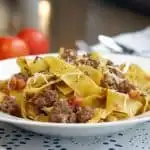
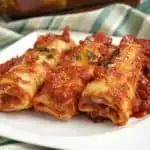
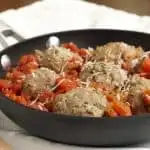
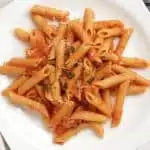
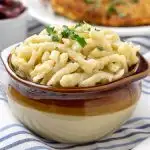
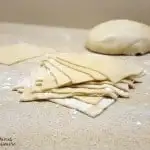
jorge
Thursday 29th of February 2024
Hi, just a couple of things, 'ñoqui' would be only one, it's not the plural. The plural with 'i' is italian, not spanish. Therefore the name of the receipt is 'Ñoquis con Tuco'. Otherwise you would expect only one in your plate, a little too few ;-) Furthermore, there is in Argentina a very emotional discusion about if the dough needs eggs or not. I do like my granny did, only flour and potatoes, allthoug the idea with ricotta is very tempting. And about the 29th tradition, that couldn't be the italian inmigrants, it's a lot more modern custom. Something about the 80s or 90s. The italian inmigrants influence was something of the beginning of the XX century. I didn't hear anything of that before the end of 80s. cheers, j.
jorge
Tuesday 5th of March 2024
@Sarah - Curious Cuisiniere, ps: if you search 'Kassnocken' you could find photos of it. Nocken alone is a very general name for a dough presented in differents ways, even sweet.
jorge
Tuesday 5th of March 2024
@Sarah - Curious Cuisiniere, that with the region could be, later after writing the comment, I thought about it, too. But searching in the net you find that nobody knows it for sure and its pure speculation where it comes from. What you say of the 'ñoqui' in plural, I don't think that that could come from a spanish native speaker. I think more with a confusion about the italian form. Gnocchi is plural, in italian you have 'i' and 'e' as plurals at ending. In spanish only the 's'. 'Ñoqui' is singular, no doubt about it. Apropos, for what I know about it, the origins of the gnocchi are in the alps. There if you go north, beyond the italian region, you could find the 'nocken' in the german speaking regions, a variant with also small 'pasta' but without potatoes in the dough. Nocken, gnocchi, both words are not far away from each other and in the south alps the two languages mix together. Tipically will be served in a little pan with a gratin of alps cheese. Recommended, specially in winter :-)
Sarah - Curious Cuisiniere
Monday 4th of March 2024
How interesting. Thank you so much for sharing Jorge. I wonder why most of the time the name of this dish, even in Spanish uses the singular? Everything in our research pointed to the Italian immigrants and the 29th tradition, I wonder if that was in a particular region and it became more widely popular in the 80s?
Nicole Ruiz-Hudson
Monday 21st of January 2019
These Noqui look so completely delicious!
Sarah Ozimek
Tuesday 22nd of January 2019
Thanks Nicole!
David
Sunday 20th of January 2019
delicious pairing & fun back story about the 29th of the month tradition!
Sarah Ozimek
Sunday 20th of January 2019
Thanks David!
Wendy Klik
Monday 14th of January 2019
Your noqui recipe sounds delicious. Cant wait to try it.
Sarah Ozimek
Monday 14th of January 2019
Thanks Wendy! Hope you get a chance to try it!
Martin Redmond
Sunday 13th of January 2019
It so great to see another pairing for Argentinian wine other than beef Sarah! Great looking recipe!
Sarah Ozimek
Monday 14th of January 2019
They are such a great match for beef, but we do love a bit of a challenge! Thanks!